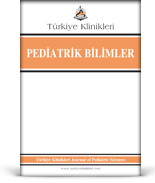Öksürük solunum sistemi sağlığının devamında çok önemli yere sahip bir savunma mekanizması olup çocuklarda çok sık görülen bir semptomdur. Dört haftadan uzun süren günlük öksürük kronik öksürük olarak kabul edilir. Çocuklarda kronik öksürük etyolojisi hem çok geniş hem de erişkinlerden farklı olduğu için tanısal yaklaşım da farklı olmalıdır. Öncelikle öksürük şikayetinin normal sınırlarda olup olmadığı ve ailenin öksürük algılaması gözden geçirilmelidir. Daha sonra her çocuk altta yatan önemli hastalıklara işaret eden spesifik tanısal göstergeler açısından ayrıntılı olarak değerlendirilmeli ve gerekiyorsa ileri tetkikler yapılmalıdır. Kronik prodüktif öksürük daima patolojik kabul edilmeli ve araştırılmalıdır. Ayrıca, bazı karakteristik öksürük tipleri(örn. Staccato,spazmotik, metalik,vs) belirli etyolojilere işaret edebilir. Öksürük dışında hiçbir belirti ve bulgusu olmasa da her çocukta akciğer grafisi ve yaşı uygunsa spirometri ve reverzibilite mutlaka bakılmalıdır. Tüm bu değerlendirmelerin negatif olduğu, çevresel faktörlerin ekarte edildiği çocukta kronik non-spesifik öksürük düşünülür. Bu gruba giren hastalıklar arasında enfeksiyonlar ve post-enfeksiyöz öksürük, eozinofilik hava yolu inflamasyonu ile giden hastalıklar (gizli astım, öksürük-varyant astım [ÖVA], non-astmatik eozinofilik bronşit), postnazal akıntı sendromu [PNAS), gastroösefagial reflü [GOR] ve psikojenik öksürükler yer alır. Ancak spesifik öksürük ve nonspesifik öksürük tablolarının örtüşebileceği, aynı anda birden fazla etyolojinin rol oynayabileceği de akılda tutulmalıdır. Özellikle gelişmekte olan toplumlarda çocuklarda kronik nonspesifik öksürük nedenleri arasında enfeksiyonlar ve post-enfeksiyöz durumlar sık olup, olguların önemli bir kısmında spontan düzelme beklenir. Ancak, çok sık görülmeseler de yabancı cisim aspirasyonu, PNAS, ÖVA ve GOR açısından hastaların değerlendirilmesi ve gerekiyorsa daha ayrıntılı tetkiklerin yapılması gereklidir. Bu hastalıklar düşünülmüyorsa hasta 1-2 hafta süresince spontan düzelme açısından tedavisiz gözlenebilir. Bu süreç sonunda hasta spesifik göstergeler açısından tekrar değerlendirilir. Öksürüğün düzelmediği ve risk faktörlerine sahip çocuklarda astım benzeri durumlar açısından ampirik inhale steroid tedavisi veya uzamış bronşit ve enfeksiyonlar açısından da ampirik antibiotik tedavisi başlanıp yanıt değerlendirilir. 2-4 hafta içinde düzelmeyen olgularda inhale steroid kesilmeli ve hasta diğer etyolojiler açısından tekrar araştırılmalıdır. Tedaviye yanıt veren olgularda da steroid kesilip postenfeksiyöz öksürük-ÖVA ayırımı için öksürük rekürrensi izlenmelidir. Çocuklarda kronik öksürükte daima etyoloji belirlenmeye çalışılmalı ve tedavi etyolojiye yönelik olarak verilmelidir.
Anahtar Kelimeler: Kronik öksürük, postenfeksiyöz öksürük, öksürük-varyant astım, persistan öksürük
Cough, which is a fundamental reflex defense mechanism for the maintenance of respiratory health, is a very common symptom in pediatrics. Pediatric chronic cough is defined as a daily cough lasting for > 4 weeks. Children with cough should be managed according to child-specific guidelines as the etiology and incidence differs from those in adults. First of all, parental perception of cough and its severity should be looked over since cough may be within normal limits(expected cough). Then, every child with chronic cough should be thoroughly evaluated for the symptoms and signs of an underlying respiratory or systemic disease (specific cough) and further complex investigations be performed if indicated. Chronic productive or purulent cough is always pathologic and should be investigated in detail. In some children, the quality of cough is recognizable (eg. Staccato, spasmotic,brassy, etc) and suggestive of the etiology (characteristic cough). Every child with chronic cough should undergo a chest radiograph and spirometry (if age appropriate) with reversibility testing, even if there is no symptoms and signs other than cough. Chronic cough in the absence of specific pointers in the history and physical examination and normal spirometry and X-Ray is termed nonspecific cough. Within this subgroup respiratory infections and postinfectious cough, upper airway disorders (postnasal drip syndrome), asthma and asthma-like conditions, gastroesophageal reflux and psychogenic cough exist. However, there is an overlap among specific, nonspecific and expected cough and hence, any child with chronic cough should be reviewed as a case. In the majority of children nonspecific cough is most likely related to a nonserious etiology or may spontaneously resolve. A watch, wait and review approach for 1 to 2 weeks can be applied if cough is the sole manifestation. Meanwhile, the patient should be evaluated for foreign body aspiration, postnasal drip syndrome, cough-variant asthma and gastroesophageal reflux disease, although they are not common. Beyond this period,, empirical trial of inhaled steroids or antibiotics may be warranted. If there is a favorable response after 2 to 3 weeks of steroid treatment then it is stopped in order to observe for a relapse of cough or total resolution(period effect). If the cough does not resolve during the medication trial within the expected response time, it should be withdrawn. In children with chronic cough, the etiology should be defined and treatment should ve etiologically based.
Keywords: Chronic cough, postinfectious cough, cough-variant asthma, persistent cough







.: Process List